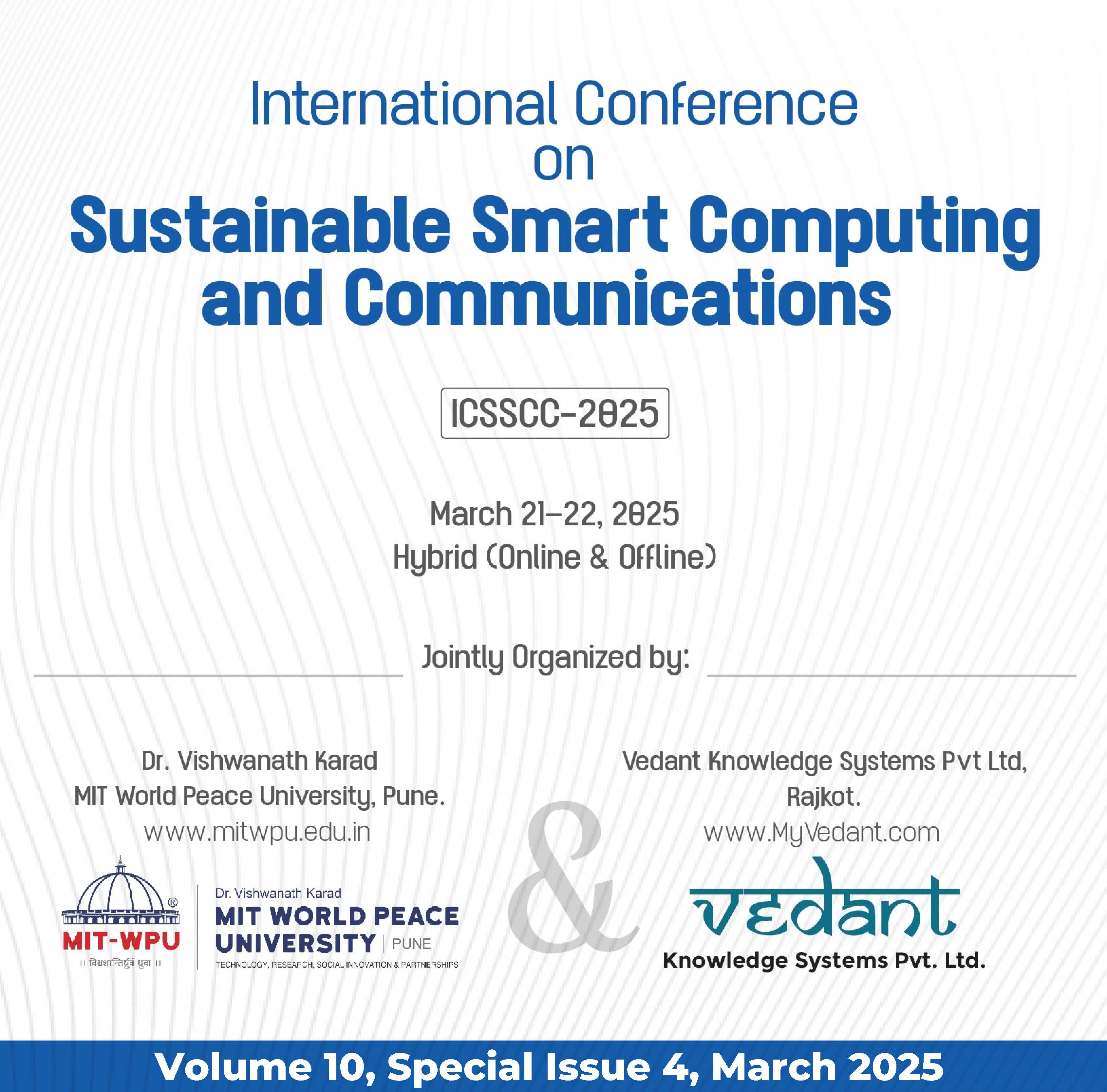AI Driven Security: Automating Vulnerability Detection and Testing with Gen-AI and LLMs
Keywords:
Gen-AI, LLMs, Data Privacy, GRC, Compliance, VAPT, SAST, OWASP, CVE, CVSSAbstract
In the contemporary digital landscape, the escalating sophistication and frequency of new and innovative cyber threats necessitate innovative and efficient security measures. Traditional vulnerability detection and testing methods often fall short due to their labor-intensive nature, reliance on manual processes, and inability to keep pace with rapidly evolving threats. This research explores the transformative potential of AI-driven security solutions, specifically focusing on the application of Generative AI (Gen-AI) and Large Language Models (LLMs) to automate vulnerability detection and testing. Gen-AI and LLMs offer unprecedented capabilities in analyzing vast datasets, networks, software glitches, identifying patterns, and generating novel solutions. By leveraging these technologies, security professionals can significantly enhance the speed, accuracy, and comprehensiveness of vulnerability detection. This study investigates how Gen-AI can be trained to recognize vulnerabilities by analyzing historical data, code repositories, and threat intelligence feeds. The research also examines the role of LLMs in generating realistic test scenarios and simulating attacks, thereby providing a more robust testing environment. The methodology involves a multi-faceted approach, combining supervised learning techniques to train models on pattern based labeled vulnerability data, unsupervised learning to identify anomalies in code, and reinforcement learning to optimize the detection and testing processes. The study employs a diverse dataset, including open-source code repositories, CVEs (Common Vulnerabilities and Exposures), vulnerability databases, CVSS (Common Vulnerability Scoring System) and real-world attack vectors, to ensure the models' robustness and generalizability. Preliminary results indicate that AI-driven solutions can detect vulnerabilities with higher accuracy and at a faster rate compared to traditional methods. The integration of LLMs in test scenario generation has also shown promise in identifying previously undetected vulnerabilities by simulating complex attack paths. This research highlights the potential of Gen-AI and LLMs to revolutionize cybersecurity practices, making them more proactive and adaptive to emerging threats.
However, the study also acknowledges the challenges associated with AI-driven security, such as model interpretability, data bias, and the ethical implications of AI in cybersecurity. Future work will focus on addressing these challenges and further optimizing the models to handle a broader range of vulnerabilities and attack vectors. The ultimate goal is to develop a comprehensive AI-driven framework that can autonomously detect and mitigate vulnerabilities, thereby enhancing the overall security posture of organizations in the digital age. In conclusion, this research underscores the critical role of Gen-AI and LLMs in modern cybersecurity; by automating vulnerability detection and testing, these technologies offer a scalable and effective solution to the growing multi-dimensional cybersecurity challenges.
Downloads
References
R. Russell et al., "Automated Vulnerability Detection in Source Code Using Deep Representation Learning," 2018 17th IEEE International Conference on Machine Learning and Applications (ICMLA), Orlando, FL, USA, 2018, pp. 757-762, doi: 10.1109/ICMLA.2018.00120.
Feng, Zhangyin & Guo, Daya & Tang, Duyu & Duan, Nan & Feng, Xiaocheng & Gong, Ming & Shou, Linjun & Liu, Ting & Jiang, Daxin & Zhou, Ming. (2020). CodeBERT: A Pre-Trained Model for Programming and Natural Languages. 1536-1547. 10.18653/v1/2020.findings-emnlp.139.
Mathews, N. S., Brus, Y., Aafer, Y., Nagappan, M., & McIntosh, S. (2024). Llbezpeky: Leveraging large language models for vulnerability detection. arXiv preprint arXiv:2401.01269.
Çaylı, Osman. (2024). AI-Enhanced Cybersecurity Vulnerability-Based Prevention, Defense, and Mitigation using Generative AI. Orclever Proceedings of Research and Development. 5. 655-667. 10.56038/oprd. v5i1.616.
Weiping Ding, Mohamed Abdel-Basset, Ahmed M. Ali, Nour Moustafa, Large language models for cyber resilience: A comprehensive review, challenges, and future perspectives, Applied Soft Computing, Volume 170, 2025, 112663, ISSN 1568-4946, https://doi.org/10.1016/j.asoc.2024.112663.
Nadella, G.S.; Addula, S.R.; Yadulla, A.R.; Sajja, G.S.; Meesala, M.; Maturi, M.H.; Meduri, K.; Gonaygunta, H. Generative AI-Enhanced Cybersecurity Framework for Enterprise Data Privacy Management. Computers 2025, 14, 55. https://doi.org/10.3390/computers14020055
C. Seas, G. Fitzpatrick, J. A. Hamilton and M. C. Carlisle, "Automated Vulnerability Detection in Source Code Using Deep Representation Learning," 2024 IEEE 14th Annual Computing and Communication Workshop and Conference (CCWC), Las Vegas, NV, USA, 2024, pp. 0484-0490, doi: 10.1109/CCWC60891.2024.10427574.
Thawani, Pragati & Ajmire, Prafulla & Atique, Mohammad & Chaurasia, Suhashini. (2024). Enhancing Cyber Security Through Generative Adversarial Networks Enhancing Cyber Security Through Generative Adversarial Networks.
Jewani, Varkha Kumarlal, et al. "Enhancing Cyber Security Through Generative Adversarial Networks." In Enhancing Security in Public Spaces Through Generative Adversarial Networks (GANs), edited by Sivaram Ponnusamy, et al., 177-192. Hershey, PA: IGI Global, 2024. https://doi.org/10.4018/979-8-3693-3597-0.ch013
Hilario, E., Azam, S., Sundaram, J. et al. Generative AI for pentesting: the good, the bad, the ugly. Int. J. Inf. Secur. 23, 2075–2097 (2024). https://doi.org/10.1007/s10207-024-00835-x
Chen, J., Hu, S., Zheng, H., Xing, C., Zhang, G.: GAIL-PT: an intelligent penetration testing framework with generative adversarial imitation learning. Comput. Secur. 126, 103055 (2023)
Mohamed Amine Ferrag, Fatima Alwahedi, Ammar Battah, Bilel Cherif, Abdechakour Mechri, Norbert Tihanyi, Tamas Bisztray, Merouane Debbah, Generative AI in Cybersecurity: A Comprehensive Review of LLM Applications and Vulnerabilities, Internet of Things and Cyber-Physical Systems, 2025, ISSN 2667-3452, https://doi.org/10.1016/j.iotcps.2025.01.001.
